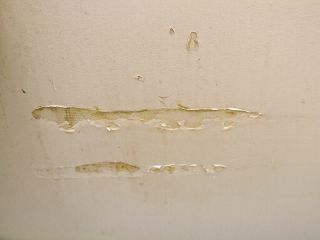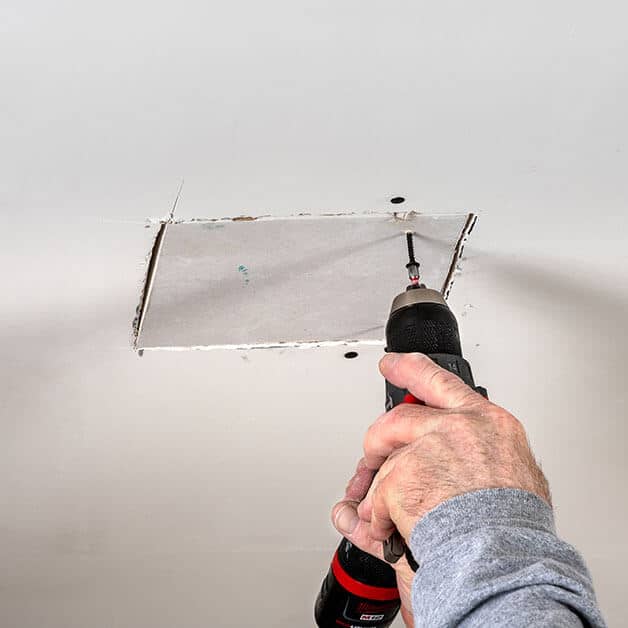A Comprehensive Overview to Mastering Drywall Repair Work and Installment
This overview offers a complete expedition of drywall repair work and installation, satisfying both beginners and seasoned professionals. It describes essential devices, methods for patching and hanging sheets, and the crucial finishing processes. drywall contractors. By understanding common risks, individuals can attain refined outcomes. Understanding these abilities not just boosts one's home however additionally builds self-confidence in DIY undertakings. What fundamental tips will guarantee a successful project throughout?
Essential Devices for Drywall Fixing and Installation
When starting on drywall repair work and installment, a few essential devices can significantly enhance the performance and quality of the work. A drywall blade, commonly available in various sizes, is important for using joint substance and smoothing seams. A taping knife is likewise required for feathering sides and making certain a seamless coating. In addition, a drywall saw or energy knife permits for precise cutting of drywall sheets to fit any area.

Step-by-Step Guide to Patching Holes
Covering openings in drywall is a simple process that can recover the wall surface's look and integrity. To begin, the location around the opening need to be cleaned up and any kind of loose particles got rid of. For little openings, a basic spackle or joint compound can be applied with a putty blade. Bigger openings might call for a spot; an item of drywall can be reduced to fit the opening, safeguarded with glue or screws, and after that taped around the edges. When the patch is in place, joint substance is used over the spot and feathery out to mix with the bordering wall surface. After the compound dries, sanding is needed to achieve a smooth finish. Ultimately, the fixed location can be keyed and painted to match the rest of the wall. This approach assures a smooth repair service, improving the general look of the drywall and keeping its architectural honesty.
Strategies for Hanging Drywall Sheets
After effectively repairing openings in drywall, the following action involves hanging brand-new drywall sheets to create a smooth surface. site web To achieve this, one should begin by measuring the wall surface area precisely and reducing the drywall sheets to fit. It is important to hang the sheets horizontally for far better structural integrity, beginning with the top and working downwards.
Using a drywall lift can simplify the procedure, particularly for ceiling installations. As soon as placed, protecting the sheets with drywall screws at intervals of about 12 inches along the sides and 16 inches in the area is important. This assures a strong hold and decreases the risk of sagging. For corners, the sheets ought to be reduced to fit snugly, enabling cleaner joints. It is recommended to surprise the joints in between sheets to reinforce the overall framework, creating a much more long lasting surface prepared for the next stage in the drywall installment procedure.
Ending Up Touches: Insulation and Mudding
Finishing the drywall installation includes the vital steps of taping and mudding, which ensure a smooth and polished surface. Insulation requires the application of joint tape over the seams in between drywall sheets. drywall contractor. This tape can be either paper or fiberglass fit together, with each kind offering unique benefits. After taping, the next step is mudding, where joint compound, or "mud," is applied to cover the tape and fill any type of imperfections
Utilizing a drywall blade, the compound ought to be spread equally, making certain a feathered side to lessen visible modifications. Numerous layers are often needed, with fining sand in between each layer to achieve a smooth surface area. Mindful attention during this procedure is vital, as it significantly influences the last look of the wall surface. With the ideal method and patience, the end result will be a flawless foundation all set for paint or completing touches.
Common Mistakes to Stay Clear Of in Drywall Projects

One more typical mistake is not enabling adequate drying time between coats, which can trap dampness and jeopardize the surface. Furthermore, ignoring to feather the sides effectively can produce noticeable lines and blemishes. Ultimately, skipping sanding or using improper methods may leave harsh places. By understanding these risks, people can substantially enhance the high quality of their drywall tasks and achieve a professional-looking surface.
Regularly Asked Questions
Can I Repair Drywall Without Specialist Aid?
Yes, one can fix drywall without professional assistance. With the right tools, materials, and assistance, people can successfully manage minor fixings. Significant damages may call for specialist proficiency for suitable outcomes and longevity.
How Long Does Drywall Substance Take to Dry?
Drywall compound generally takes in between 24 to 48 hours to dry totally, depending upon factors such as moisture and temperature level. Thinner layers may dry out much faster, while thicker applications need more time for ideal results.
What's the Ideal Kind of Paint for Drywall?
The most effective kind of paint for drywall is generally a water-based latex paint. It provides superb coverage, durability, and simplicity of application, making it perfect for indoor wall surfaces while permitting for easy cleanup with soap and water.

Exactly how Do I Stop Mold And Mildew on Drywall?
To avoid mold and mildew on drywall, warranty correct air flow, control moisture levels, utilize mold-resistant products, and immediately resolve any leaks. Regular inspections and immediate remediation of water damages are additionally vital for long-lasting prevention.
Is Drywall Recyclable After Removal?
Drywall is recyclable after removal, provided it is free from impurities like mold, paint, or various other harmful materials. Recycling facilities can refine it into new items, advertising sustainability and reducing landfill waste in construction.
When beginning on drywall repair and installation, a couple of important devices can significantly boost the effectiveness and quality of the job. After successfully repairing openings in drywall, the next action includes hanging new drywall sheets to develop a seamless surface area. Finishing the drywall installment includes the essential steps of taping and mudding, which assure a smooth and refined surface. Achieving a sleek surface in drywall projects can be challenging, and numerous common blunders can undermine the high quality of the work. Yes, one can fix drywall without professional aid.